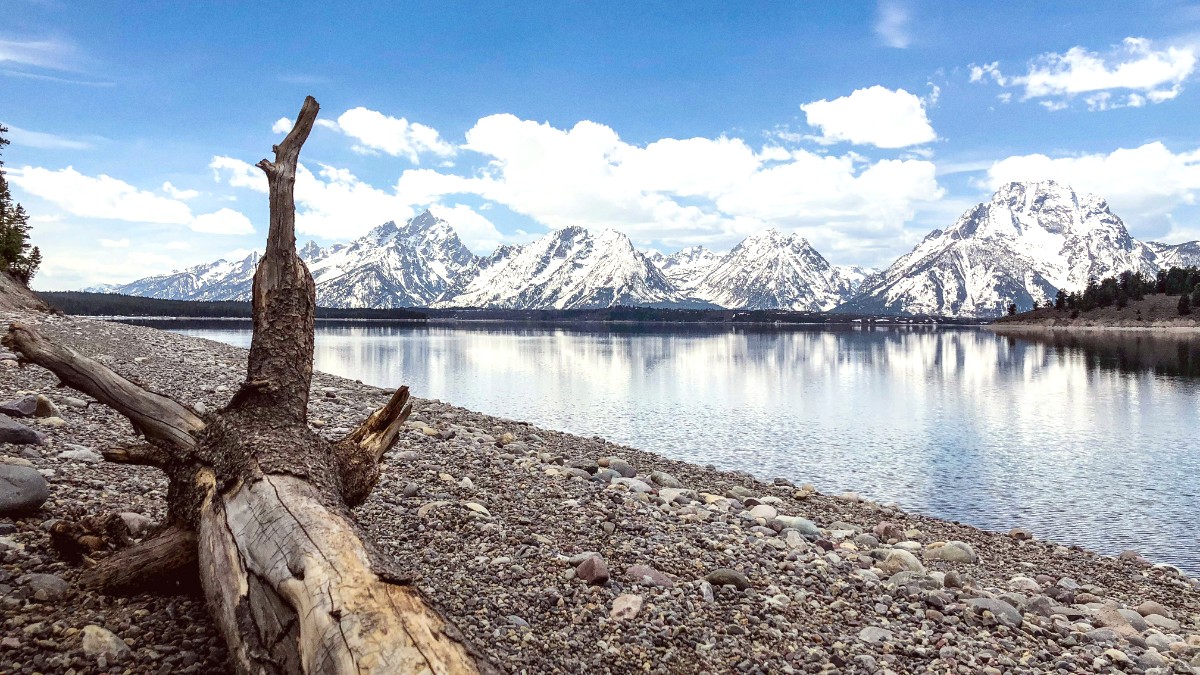
Wyoming, USA
Summer (June - August): Days are warm, and nights are cool. Average daytime temperatures range from 70-80°F (21-27°C), with nighttime lows dropping to 40-50°F (4-10°C). Humidity remains low. Afternoon thunderstorms occur often.
Winter (November - April): This period brings cold and snow. Average daytime temperatures are 20-30°F (-6- -1°C), with nighttime lows from 0-15°F (-18- -9°C). Heavy snowfall is typical, with higher elevations receiving over 400 inches annually.
The region's popularity means that during peak periods, higher demand for accommodation and activities exists.
Summer (Late June - Early Sept) & Winter (Mid-Dec - March)
All park roads and trails open (summer). Peak skiing/snowboarding conditions (winter). Atmosphere.
Highest prices and largest crowds. Advance bookings are a must. Limited park access in winter.
Spring (May - Early June) & Autumn (Late Sept - Early Nov)
Fewer crowds, lower prices. Good early-season wildlife viewing (spring). Stunning fall colors and elk rut (autumn).
Unpredictable weather. Many services, roads, and trails may stay closed. Days are shorter in autumn.
Late April - Mid-May & Late Oct - Mid-Dec
Lowest prices. Very small crowds. An authentic local atmosphere is present.
Many businesses close. Limited activities. Unpredictable weather, trails can be muddy.
Jackson Hole sits at approximately 6,237 feet (1,901 meters). Altitude sickness is a possibility, specifically for those arriving from sea level. Stay hydrated and take it easy initially.
Late summer and early autumn can bring wildfire smoke from regional fires. This impacts air quality and visibility. Check local reports before your visit.
Winter temperatures drop well below 0°F (-18°C). Summer afternoons reach over 85°F (29°C). Pack layers.
Winter travel calls for preparedness for heavy snow, icy roads, and potential road closures, especially on Teton Pass and park roads.
Mountain weather changes quickly. Be ready for sudden shifts from sun to rain or snow, even in summer.
High altitude elevates UV intensity. Sunscreen, hats, and sunglasses are a must.
Animals frequent roads, especially at dawn and dusk. Drive with extreme caution.
Entry for international visitors aligns with general United States regulations. United States citizens just need valid identification.
Select the correct visa for your travel purpose and nationality.
Have all necessary documents ready for your U.S. Entry.
Begin the visa application process well in advance of your trip.
Jackson Hole is known for its beauty, and it can be an expensive destination. Careful budgeting aids in managing costs and enjoying your trip.
The local currency is the United States Dollar (USD). Major credit cards receive wide acceptance throughout Jackson Hole. ATMs are readily available in the town of Jackson and Teton Village.
Currency exchange services remain limited outside major airports. Exchange currency before arrival or withdraw USD from ATMs upon landing. Notify your bank of your travel dates to avoid card issues.
Approx. $100 - $200 USD per day.
Hostel beds, basic motels, or camping. Self-catering, fast-casual eateries.
Limited ride-sharing. Fewer paid attractions.
Approx. $250 - $600 USD per day.
Mid-range hotels, vacation rentals. Mix of casual and nicer dining.
Occasional paid excursions. Car rental for flexibility.
$700+ USD per day.
Luxury hotels/resorts. Fine dining experiences. Private car services.
Exclusive guided tours. Premium activities like heli-skiing.
| Category | Budget (USD) | Mid-Range (USD) | Luxury (USD) |
|---|---|---|---|
| Accommodation | Hostel bed: $40-80, Basic motel: $150-250, Camping: $30-50 | Hotel room: $200-500+, VRBO/Airbnb: $300-800+ | Resort/Lodge: $700-2000+ |
| Meals (per person, per meal) | Breakfast: $5-15, Lunch: $10-20, Dinner: $15-30 | Breakfast: $15-25, Lunch: $20-40, Dinner: $40-80 | Breakfast: $25-40+, Lunch: $40-70+, Dinner: $90-200+ |
| Transportation | START Bus: $1-3/ride, Taxi/Ride-Share: $15-40/short trip | Rental Car: $80-200/day, Gas: $30-60/day | Private Car: $500+/day |
The mountain environment brings unique considerations for your well-being.
No specific vaccinations are a must for U.S. Entry for tourism. Routine immunizations (MMR, DTaP, Varicella, Polio), and an annual flu shot are generally advised. Consult the CDC website.
St. John's Health in Jackson serves as a full-service hospital with an emergency department. Several urgent care clinics exist for non-life-threatening issues. Dial 911 for emergencies.
Tap water in Jackson Hole and surrounding developed areas is safe for drinking. Food safety standards are high in restaurants and stores.
Travel insurance is a good idea.
A comprehensive travel insurance policy covers medical emergencies, emergency evacuation, trip cancellation/interruption, lost luggage, and rental car damage. This offers financial protection for unforeseen circumstances.
Consider policies from World Nomads for adventurous travel, SafetyWing for digital nomads, or Insubuy for visitors to the U.S.
AirHelp aids passengers with flight compensation (AirHelp.com).
Jackson Hole generally has a very low crime rate. The area stays safe for tourists. Apply standard precautions: do not leave valuables unattended in vehicles, secure accommodation, and know your surroundings.
Snowstorms/avalanches are common in winter. Wildfires are most prevalent in late summer/early fall. Flash floods are rare but possible during intense summer thunderstorms.
Emergency Services (Police, Fire, Ambulance): 911. St. John's Health: +1 (307) 733-3630. Grand Teton NP Emergency: +1 (307) 739-3301. Yellowstone NP Emergency: +1 (307) 344-7311.
The mountain environment presents unique health considerations. Awareness and prevention are .